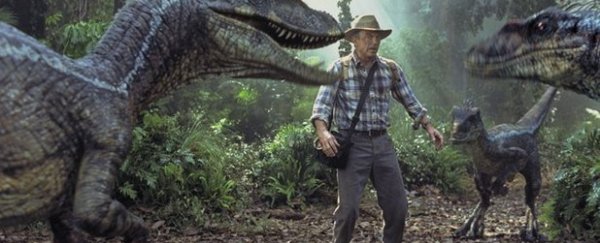We may be a long way from ever opening a dinosaur-filled theme park like those envisioned by Michael Crichton and Steven Spielberg, but scientists have made an astonishing discovery while working on a group of 75-million-year-old fossils: they appeared to contain ancient blood cells and protein tissue.
The find upends something we've always assumed about dinosaur fossils: that these blocks of decayed bone are devoid of skin, flesh, blood and any other type of organic matter. The scientists involved, from Imperial College London in the UK, have used a new technique to analyse fossil bones - and if their original findings are backed up, we might have to rethink our theories on how long soft tissue can survive.
As Robert F. Service reports for Science Magazine, materials scientist Sergio Bertazzo and palaeontologist Susannah Maidment used a new approach to try and tease out signs of ancient proteins in their fossil samples (eight sections of dinosaur toe, rib, hip, leg, and claw). The pair employed a focused ion beam to slice through the samples, leaving a clean edge perfect for high-resolution imagery studies.
"We didn't see bone crystallites," explained Maidment, which is what the researchers would have expected to find after such a procedure. "What we saw instead was soft tissue. It was completely unexpected. My initial response was these results are not real."
The suspected collagen fibres were then weighed using a mass spectrometer, and the resulting figures matched what you would expect to find from the most common amino acids in collagen. While this isn't conclusive proof that the protein is real (and not caused by contamination, for example), the scientists are planning to run more tests soon to verify the material they've found. You can see the linear fibres, which are thought to be collagen, in the scanning electron microscope image below:
 Sergio Bertazzo
Sergio Bertazzo
It's not the first time scientists have claimed to have discovered proteins in bones: in 2005 a team led by North Carolina State University palaeontologist Mary Schweitzer found such tissue from a 68-million-year-old Tyrannosaurus rex fossil, though further research was unable to verify the claims and rule out contamination. Schweitzer herself believes iron in the dinosaur's body was able to preserve the organic matter.
The findings of Bertazzo and Maidment have thrown open the debate once again: proteins are thought to commonly decay after hundreds of thousands of years, and a few million years at most, but is this assumption correct? What makes the new study so potentially exciting is that these fossils weren't particularly well-preserved specimens, so soft tissue remnants and red blood cells may not even need any special conditions to survive.
The work has been published in Nature Communications, and if verified in the near future, could teach us a lot about how dinosaur proteins and blood cells differ from our own - it's like a window looking millions of years back into the past. Don't hold your breath for a Jurassic Park-style rebirth yet though, because DNA remains have yet to be found.
